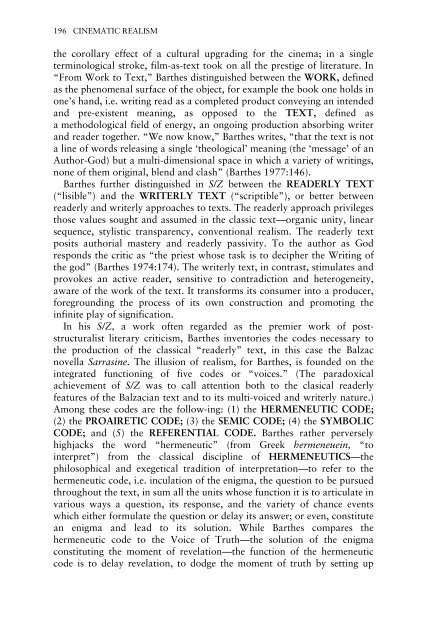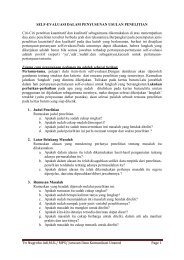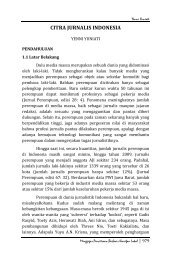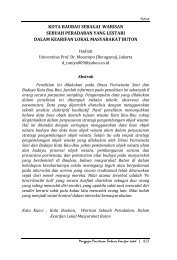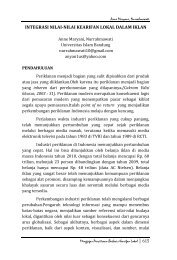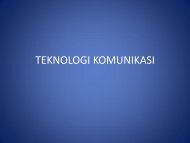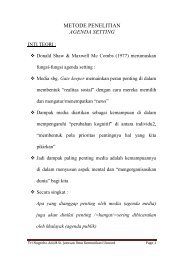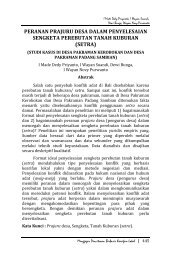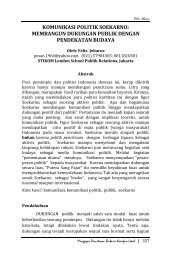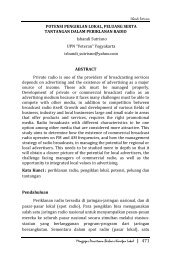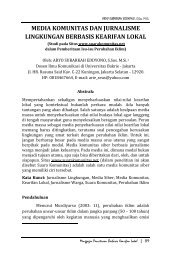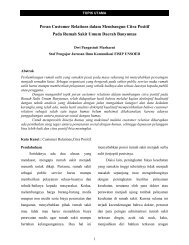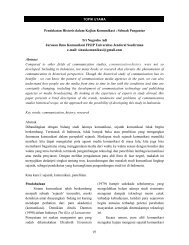New Vocabularies in Film Semiotics
New Vocabularies in Film Semiotics
New Vocabularies in Film Semiotics
You also want an ePaper? Increase the reach of your titles
YUMPU automatically turns print PDFs into web optimized ePapers that Google loves.
196 CINEMATIC REALISM<br />
the corollary effect of a cultural upgrad<strong>in</strong>g for the c<strong>in</strong>ema; <strong>in</strong> a s<strong>in</strong>gle<br />
term<strong>in</strong>ological stroke, film-as-text took on all the prestige of literature. In<br />
“From Work to Text,” Barthes dist<strong>in</strong>guished between the WORK, def<strong>in</strong>ed<br />
as the phenomenal surface of the object, for example the book one holds <strong>in</strong><br />
one’s hand, i.e. writ<strong>in</strong>g read as a completed product convey<strong>in</strong>g an <strong>in</strong>tended<br />
and pre-existent mean<strong>in</strong>g, as opposed to the TEXT, def<strong>in</strong>ed as<br />
a methodological field of energy, an ongo<strong>in</strong>g production absorb<strong>in</strong>g writer<br />
and reader together. “We now know,” Barthes writes, “that the text is not<br />
a l<strong>in</strong>e of words releas<strong>in</strong>g a s<strong>in</strong>gle ‘theological’ mean<strong>in</strong>g (the ‘message’ of an<br />
Author-God) but a multi-dimensional space <strong>in</strong> which a variety of writ<strong>in</strong>gs,<br />
none of them orig<strong>in</strong>al, blend and clash” (Barthes 1977:146).<br />
Barthes further dist<strong>in</strong>guished <strong>in</strong> S/Z between the READERLY TEXT<br />
(“lisible”) and the WRITERLY TEXT (“scriptible”), or better between<br />
readerly and writerly approaches to texts. The readerly approach privileges<br />
those values sought and assumed <strong>in</strong> the classic text—organic unity, l<strong>in</strong>ear<br />
sequence, stylistic transparency, conventional realism. The readerly text<br />
posits authorial mastery and readerly passivity. To the author as God<br />
responds the critic as “the priest whose task is to decipher the Writ<strong>in</strong>g of<br />
the god” (Barthes 1974:174). The writerly text, <strong>in</strong> contrast, stimulates and<br />
provokes an active reader, sensitive to contradiction and heterogeneity,<br />
aware of the work of the text. It transforms its consumer <strong>in</strong>to a producer,<br />
foreground<strong>in</strong>g the process of its own construction and promot<strong>in</strong>g the<br />
<strong>in</strong>f<strong>in</strong>ite play of signification.<br />
In his S/Z, a work often regarded as the premier work of poststructuralist<br />
literary criticism, Barthes <strong>in</strong>ventories the codes necessary to<br />
the production of the classical “readerly” text, <strong>in</strong> this case the Balzac<br />
novella Sarras<strong>in</strong>e. The illusion of realism, for Barthes, is founded on the<br />
<strong>in</strong>tegrated function<strong>in</strong>g of five codes or “voices.” (The paradoxical<br />
achievement of S/Z was to call attention both to the clasical readerly<br />
features of the Balzacian text and to its multi-voiced and writerly nature.)<br />
Among these codes are the follow-<strong>in</strong>g: (1) the HERMENEUTIC CODE;<br />
(2) the PROAIRETIC CODE; (3) the SEMIC CODE; (4) the SYMBOLIC<br />
CODE; and (5) the REFERENTIAL CODE. Barthes rather perversely<br />
highjacks the word “hermeneutic” (from Greek hermeneue<strong>in</strong>, “to<br />
<strong>in</strong>terpret”) from the classical discipl<strong>in</strong>e of HERMENEUTICS—the<br />
philosophical and exegetical tradition of <strong>in</strong>terpretation—to refer to the<br />
hermeneutic code, i.e. <strong>in</strong>culation of the enigma, the question to be pursued<br />
throughout the text, <strong>in</strong> sum all the units whose function it is to articulate <strong>in</strong><br />
various ways a question, its response, and the variety of chance events<br />
which either formulate the question or delay its answer; or even, constitute<br />
an enigma and lead to its solution. While Barthes compares the<br />
hermeneutic code to the Voice of Truth—the solution of the enigma<br />
constitut<strong>in</strong>g the moment of revelation—the function of the hermeneutic<br />
code is to delay revelation, to dodge the moment of truth by sett<strong>in</strong>g up


